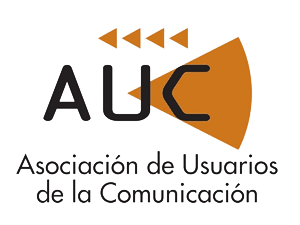Resumen
A raíz del confinamiento como consecuencia de la COVID-19 en 2020, se ha intensificado el uso de la tecnología incorporándola en múltiples y nuevas facetas de nuestra vida. Este proceso de digitalización se ha visto incrementado entre la llamada “Generación Zeta”, donde la tecnología está ya completamente integrada en su día a día: el 90% de los menores disponen de un smartphone y pasan una media de 4 horas al día conectados a Internet, más tiempo del que dedican a sus estudios (Qustodio, 2022).
A pesar del uso intensivo que los menores hacen del móvil (en plataformas de video online, redes sociales o apps de comunicación), éstos no perciben que el tiempo manifestado que le dedican al día sea un problema en el desempeño de sus actividades diarias (FAD, 2018). Son las familias las que manifiestan que el uso habitual de los dispositivos móviles afecta de forma negativa a sus hijos, aunque solo 4 de cada 10 familias utilizan una herramienta de control parental para proteger a sus hijos en su actividad online (Qustodio, 2022).
Diferentes estudios señalan que la vulnerabilidad digital entre los menores (Fuente-Cobo, 2017) está asociada al uso excesivo en Internet y redes sociales, acrecentado por la accesibilidad de los smartphones (Pastor, García-Jiménez & López-de-Ayala, 2022); el poder de atracción de la tecnología (Díaz-López, Maquilón-Sánchez y Mirete-Ruiz, 2020) y; la inmediatez y anonimato que ofrecen los dispositivos electrónicos (Sánchez y Álvarez, 2018). Aunque numerosas investigaciones analizan los factores de riesgo asociados al uso de internet entre los menores, muy pocas están enfocadas desde la percepción de los menores sobre su propia vulnerabilidad digital.
Se ha realizado un estudio cuantitativo a una muestra de 300 menores españoles entre 14 y 16 años para conocer si se sienten vulnerables cuando están interactuando en el entorno online y qué herramientas de protección utilizan para enfrentarse a esas situaciones.
Los principales resultados del estudio señalan la alta intensidad de los menores en el entorno online (un 74,7% reconoce conectarse todos los días a RRSS y un 55,7% ve videos en YouTube con la misma frecuencia).
Esta alta exposición en el entorno online provoca situaciones de vulnerabilidad entre los menores que les genera cierta indefensión. Así, el 41% de los adolescentes se sienten vulnerables ante las fake news, provocándoles inseguridad en la Red. Además, un 30% de los menores declaran sentirse mal ante las faltas de respeto o criticas/insultos generados en RRSS, un 29% ha sentido miedo al acceder sin querer a contenido peligroso/inadecuado, o cuando un desconocido ha intentado contactar con él (22%) o le ha hecho una proposición incorrecta/indebida (19%). Por último, alrededor del 20% confiesa sentirse mal ante chantajes/amenazas, e inferior o intimidado ante el resto de la gente.
Ante estas situaciones de vulnerabilidad, el menor se protege a través de varias herramientas: en primer lugar, su círculo de confianza (un 88% recurre a los amigos y un 73% a los padres). También destacan las herramientas de protección vinculadas con las destrezas del menor en competencias digitales como bloquear cuentas o crearlas privadas. Por último, es importante señalar los sistemas de protección autoimpuestos por el menor como: revisar la información antes de subirla (76%), no subir contenido personal (70%), o compartirlo solo con personas conocidas (77%). Destaca que un tercio de la muestra señale no haber sabido qué hacer y haberse quedado bloqueado ante esa situación o que un 26% no haya hecho nada porque no le ha resultado fácil buscar ayuda.
Palabras Clave / Internet / Menores / Redes Sociales / Vulnerabilidad digital
Abstract
Following the confinement because of COVID-19 in 2020, the use of technology has intensified, incorporating it into multiple new facets of our lives. This digitization process has increased among the so-called «Generation Zeta», where technology is already fully integrated into their daily lives: 90% of minors have a smartphone and spend an average of 4 hours a day connected to the Internet, more time than they dedicate to their studies (Qustodio, 2022).
Despite the intensive use that minors make of cell phones (on online video platforms, social networks or communication apps), they don´t perceive that the time they spend on it per day is a problem in the performance of their daily activities (FAD, 2018). It´s families who state that the regular use of mobile devices negatively affects their children, although only 4 out of 10 families use a parental control tool to protect their children in their online activity (Qustodio, 2022).
Different studies point out that digital vulnerability among minors (Fuente-Cobo, 2017) is associated with excessive use on the Internet and social networks, increased by the accessibility of smartphones (Pastor, García-Jiménez & López-de-Ayala, 2022); the power of attraction of technology (Díaz-López, Maquilón-Sánchez & Mirete-Ruiz, 2020) and; the immediacy and anonymity offered by electronic devices (Sánchez & Álvarez, 2018). Although numerous investigations analyze the risk factors associated with Internet use among minors, very few are focused from the perception of minors about their own digital vulnerability.
A quantitative study was conducted on a sample of 300 Spanish minors between 14 and 16 years of age to find out whether they feel vulnerable when they are interacting in the online environment and what protection tools they use to deal with these situations.
The main results of the study point to the high intensity of minors in the online environment (74.7% recognize that they connect every day to RRSS and 55.7% watch videos on YouTube with the same frequency).
This high exposure in the online environment causes situations of vulnerability among minors that generate a certain defenselessness among them. Thus, 41% of adolescents feel vulnerable in the face of fake news, causing them insecurity. In addition, 30% of minors state that they feel bad when faced with disrespect or criticism/insults generated on social networks, 29% have felt fear when unintentionally accessing dangerous/ inappropriate content, or when a stranger has tried to contact them (22%) or has made them an incorrect/ inappropriate proposition (19%). Finally, about 20% confess to feeling bad in the face of blackmail/threats, and inferior or intimidated in front of other people.
Faced with these situations of vulnerability, children protect themselves through various tools: first, their circle of trust (88% turn to friends and 73% to parents). Protection tools linked to the child’s digital skills, such as blocking accounts or creating private accounts, also stand out. Finally, it is important to note the protection systems self-imposed by the child, such as: reviewing the information before uploading it (76%), not uploading personal content (70%), or sharing it only with people they know (77%). It is noteworthy that a third of the sample reported that they didn´t know what to do and remained blocked in this situation, or that 26% did nothing because it was not easy for them to seek help.
Keywords / Digital vulnerability / Internet / Minors / Social networks
FIRMANTES
| Nombre | Adscripción | Procedencia |
|---|---|---|
| Sonia Carcelén García | Universidad Complutense de Madrid | Madrid |
| María Galmés Cerezo | Universidad Complutense de Madrid | Madrid |



















